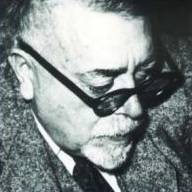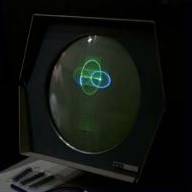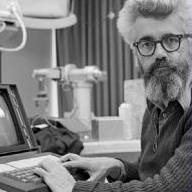
TIMELINE 1206-1981
PART-1
While there have been significant advancements in the field of AI in recent years, the quest to build automatons with an agency is something that mankind has been pursuing quite a while. In this feature, we highlight select events from the past to generate a brief timeline of artificial intelligence. Since it is impossible to list all of the events that have led to where we are today, we have tried to include those that were most interesting and significant in our opinion.

Antiquity
Greek myths of Pygmalion and Hephaestus implemented the idea of artificial beings such as Pandora and Galatea and intelligent robots such as Talos.
Source: Stanford News
https://news.stanford.edu/2019/02/28/ancient-myths-reveal-early-fantasies-artificial-life/

1206
Ibrahim Al-Jazari, father of robotics, created a programmable orchestra of mechanical beings.
Source: HistoryofInformation.com
https://www.historyofinformation.com/detail.php?id=237

1614
Thomas Hobbes, an English author published the book Leviathan in which he discussed the age of mechanical reproduction and a social cognitive theory.
Source: Stanford Encyclopedia of Philosophy
https://plato.stanford.edu/entries/hobbes/

1726
Gulliver’s Travels by Jonathan Swift describes an Engine, “a Project for improving speculative Knowledge by practical and mechanical Operations“
Source: Forbes
https://www.forbes.com/sites/gilpress/%202016/12/30/a-very-short-history-of-artificial-intelligence-ai/

1818
Frankenstein published by Mary Shelley discusses the ethics of Artificial Intelligence.
Source: Stanford Medicine
https://med.stanford.edu/medicineandthemuse/FrankensteinAt200.html

1863
According to Samuel Butler, Darwinian evolution appliesnetwork-basedthe to machines such that they become conscious.
Source: HistoryofInformation.com
https://www.historyofinformation.com/detail.php?id=3394

1898
Nikola Tesla made a demonstration of the world’s first radio-controlled vessel at an electrical exhibition in recently completed Madison Square Garden.
Source: TheVintageNews
https://www.thevintagenews.com/2016/10/01/1898-nikola-tesla-tricked-entire-crowd-believing-control-boat-shouting-commands-fact-invented-radio-control-piloted-boat/

1913
Principia Mathematica published by Bertrand Russell and Alfred North Whitehead discusses the transformation of formal logic.
Source: Stanford Encyclopedia of Philosophy
https://plato.stanford.edu/entries/princi-pia-mathematica/

1923
The word “robot” was first time used in English in the play Rossum’s Universal Robots by Czech playwright Karel Capek’s that opened in London.
Source: gutenberg.org
https://www.gutenberg.org/files/59112/59112-h/59112-h.htm

1925
A radio-controlled driverless car was released by Houdina Radio Control.
Source: DiscoverMagazine
https://www.discovermagazine.com/technology/the-driverless-car-era-began-more-than-90-years-ago

1927
A film Metropolis was released that was the first one to depict a robot.
Source: Smithsonian Magazine
https://www.smithsonianmag.com/history/1927-magazine-looks-at-metropolis-a-movie-based-on-science-4328353/

1929
Ko Nishimura, a Japanese professor designed the first Japanese robot, Gakutensoku. The robot could move its head and hands and change its facial expressions.
Source: cyberneticzoo.com
https://cyberneticzoo.com/robots/1928-gakutensoku-pneumatic-writing-robot-makoto-nishimura-japanese/

1931
Kurt Gödel, the father of theoretical computer science built an integer-based programming language.
Source: citeseerx.ist.psu
https://citeseerx.ist.psu.edu/viewdoc/download?doi=1
0.1.1.400.5501&rep=rep1&type=pdf

1943
Walter Pitts and Warren McCulloch laid the foundation of artificial neural networks and published “A Logical Calculus of the Ideas Immanent in Nervous Activity”
Source: Stanford Encyclopedia of Philosophy
https://plato.stanford.edu/entries/computational-mind/

1943-45
Norbert Wiener investigated information theory and invented the Wiener filter. He also worked on automatic anti-aircraft guns.
Source: en.wikipedia.org
https://en.wikipedia.org/wiki/Norbert_Wiener

1949
An American computer scientist, Edmund Berkeley published Giant Brains: Or Machines That Think, which popularized cognitive images of early computers.
Source: Cambridge University Press
https://www.cambridge.org/core/books/abs/reasonable-robot/understanding-artificial-intelligence/CD5D6CEA69BABE102CA1C1A4E9FF1186

1950
Alan Turing, a British mathematician, proposed the Turing Test as a measure of machine intelligence.
Source: Stanford Encyclopedia of Philosophy
https://plato.stanford.edu/entries/turing-test/

1950
Claude Shannon published the first article “Programming a Computer for Playing Chess” on developing a chess-playing computer program.
Source: Forbes
https://www.forbes.com/sites/gilpress/2016/12/30/a-very-short-history-of-artificial-intelligence-ai/

1950
Isaac Asimov published “Three Laws of Robotics”.
Source: Scientific American
https://www.scientificamerican.com/article/asimovs-laws-wont-stop-robots-from-harming-humans-so-weve-developed-a-better-solution/

1951
Dean Edmunds and Marvin Minsky built the first artificial neural network, SNARC (Stochastic Neural Analog Reinforcement Calculator).
Source: History of AI
https://historyof.ai/snarc/

1952
Arthur Samuel developed the first computer checkers-playing program.
Source: Forbes
https://www.forbes.com/sites/gilpress/2016/12/30/a-very-short-history-of-artificial-intelligence-ai/

1955
John McCarthy, Nathaniel Rochester, Marvin Minsky, and Claude Shannon coined the term “artificial intelligence”.
Source: Forbes
https://www.forbes.com/sites/gilpress/2017/08/27/artificial-intelligence-ai-defined/

Dec 1955
Logic Theorist, the first AI program was developed by Alan Newell and Herbert Simon.
Source: HistoryofInformation
https://www.historyofinformation.com/detail.php?id=742

1957
Perceptron, a two-layered computer learning network based artificial neural network was developed by Frank Rosenblatt.
Source: TowardsDataScience
https://towardsdatascience.com/rosenblatts-perceptron-the-very-first-neural-network-37a3ec09038a

1958
Lisp, a programming language developed by John McCarthy is used in AI research.
Source: Forbes
https://www.forbes.com/sites/gilpress/2016/12/30/a-very-short-history-of-artificial-intelligence-ai/

1959
Arthur Samuel, a pioneer in the field of ML, coined the term “machine learning”.
Source: Forbes
https://www.forbes.com/sites/gilpress/2016/12/30/a-very-short-history-of-artificial-intelligence-ai/

1959
Allen Newell, Herbert Simon, and John Shaw created a General Problem Solver (GPS) while at CMU.
Source: Kutztown University
http://faculty.kutztown.edu/rieksts/447-F13/lecture/histPrsptv.html

1959
Marvin Minsky and John McCarthy founded the MIT AI Lab.
Source: The New York Times
https://www.nytimes.com/2016/01/26/business/marvin-minsky-pioneer-in-artificial-intelligence-dies-at-88.html

1960
Ray Solomonoff laid foundation of the mathematical theory of AI and introduced Bayesian methods for inductive inference and prediction.
Source: Stanford Encyclopedia of Philosophy
https://plato.stanford.edu/entries/artificial-intelligence/

1961
Unimate, the first industrial robot was introduced that worked on an assembly line in a General Motors plant in New Jersey.
Source: HistoryofInformation
https://www.historyofinformation.com/detail.php?entryid=4071

1963
Julian Feldman and Edward Feigenbaum published the first collection of AI articles, Computer and Thought.
Source: The MIT Press
https://mitpress.mit.edu/books/computers-and-thought-1

1963
Leonard Uhr and Charles Vossler published one of the first ML programs, a pattern recognition program that generates, evaluates, and adjusts its canmachine-learnedoperators
Source: EPDF
https://epdf.tips/computational-mind-a-complex-dynamics-perspective.html

1964
STUDENT, a natural language understanding computer program was developed by Daniel Bobrow.
Source: TowardsDataScience
https://towardsdatascience.com/a-short-history-of-natural-language-understanding-f1b3c382f285

1965
ELIZA, a natural language processing computer program developed by Joseph Weizenbaum carries on a dialogue in the English language.
Source: Forbes
https://www.forbes.com/sites/gilpress/2016/12/30/a-very-short-history-of-artificial-intelligence-ai/

1966
Shakey, the first general-purpose mobile robot that reasons about its own actions. It analyzes commands and breaks them down to perform larger tasks.
Source: Forbes
https://www.forbes.com/sites/gilpress/2016/12/30/a-very-short-history-of-artificial-intelligence-ai/

1968
MacHack, a knowledge-based chess-playing program was built by Richard Greenblatt (MIT).
Source: Sutori
https://www.sutori.com/en/item/untitled-0254-6f90

1968-2021
Space Odyssey, a film was released that featured a sentient computer, HAL.
Source: The New York Times
https://www.nytimes.com/2018/03/30/movies/hal-2001-a-space-odyssey-voice-douglas-rain.html

1968
Terry Winograd develops SHRDLU, an early natural language comprehension computer program.
Source: Stanford HCI Group
https://hci.stanford.edu/~winograd/shrdlu/

1969
Seymour Papert and Marvin Minsky published Perceptrons: An Introduction to Computational Geometry, which features the limitations of simple neural networks.
Source: The MIT Press
https://mitpress.mit.edu/books/perceptrons

1970
WABOT-1, the first anthropomorphic robot was built at Waseda University, Japan. It consisted of a limb-control, vision, and conversation system.
Source: Forbes
https://www.forbes.com/sites/gilpress/2016/12/30/a-very-short-history-of-artificial-intelligence-ai/

1972
Stanford University developed an expert system, MYCIN, that identifies infection causing bacteria and recommends antibiotics.
Source: Britanicca
https://www.britannica.com/technology/MYCIN

1980
Waseda University, Japan built a musician humanoid robot, Wabot-2 that is able to read a musical store, play easy tunes on an electronic organ, and communicate with a person.
Source: Forbes
https://www.forbes.com/sites/gilpress/2016/12/30/a-very-short-history-of-artificial-intelligence-ai/

1981
$850 million was budgeted by the Japanese Government for the Fifth Generation Computer Project, which aims to create computers that are capable of AI.
Source: Forbes
https://www.forbes.com/sites/gilpress/2016/12/30/a-very-short-history-of-artificial-intelligence-ai/
To be Continued…


